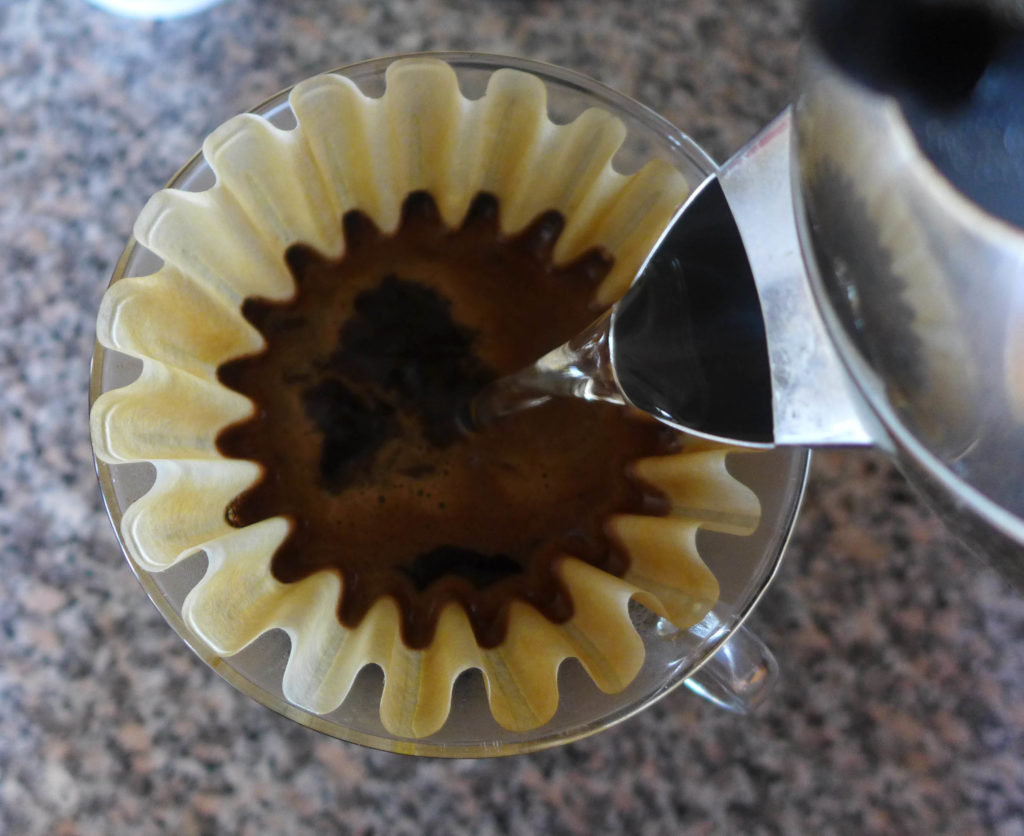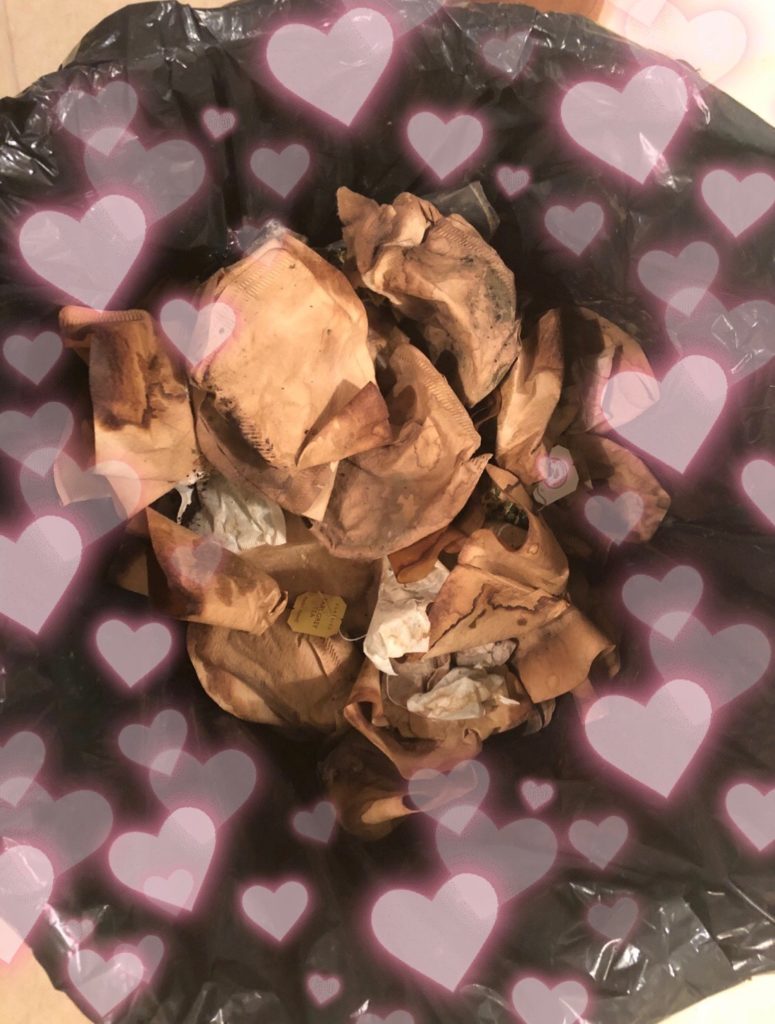Coffee is our ingredient of the season, and we’re slowly building up an archive of our favorite coffee recipes!
Now that you’ve got the gear, and you’re making your coffee at home (go you!), what do you do with the used grounds?

Instead of tossing them in the trash, add them to your compost pile!
Think this gardening talk is crazy? Autumn is a GREAT time to start a compost pile. Rake up those fallen leaves. Pile on your veggie scraps from Thanksgiving dinner, and bam, you’ve got yourself a pile.
Composting Basics
We haven’t talked about composting basics on the blog, but I can see now that a post on the subject would be handy. In the world of composting, there are two main categories of plant material : the green and the brown.
Let’s talk about brown first, it’s any of the dry materials that provide the bulk of the carbon material for your pile. These items break down slowly and add a lot of structure to the compost and are able to store or soak up water and moisture that’s in the pile. Examples of brown materials include dry leaves, sawdust, wood chips, straw, corn stalks, and other woody materials.
Green materials are items that were recently growing and are often wet materials. Examples of green materials include food scraps, grass clippings, and coffee grounds (yes, even though they are brown in color!). The green materials provide a variety of nutrients to the compost and are where you’re going to see the most active microbial activity. That process will build up the heat in your compost pile that will further aid decomposition. BUT too much green material can create a smelly and moldy pile that attracts an overabundance of insects and other pests. An ideal ratio of inputs is 4:1 brown materials to green.
Once you have a pile going with a good mix of brown and green material, there are many different methods for caring for your pile. Our favorite is just a good old layered pile of material. The oldest material on the bottom will turn into rich compost material first, so every once in a while you can harvest from there, and in the process aerate the rest of the pile.

{It’s hard to make a pile of used coffee grounds look good. Then photo filters came along. #nailedit}
Composting Coffee
Coffee grounds are high in nitrogen and other nutrients essential for healthy plant growth. You can add the used grounds, filter and all, directly to your compost bin. You don’t have to do anything else fancy to compost your used grounds.
If you look up coffee composting online, there is much debate about the acidity of the grounds and how they should best be used to supplement soils. Some sites claim that the used grounds are not acid, while others claim that they are highly acidic. The best source on this subject is our favorite public radio gardening guru, Mike McGrath from You Bet Your Garden. His sources claim that used grounds are highly acidic on their own, but when properly mixed with brown matter in a compost pile, the final product has a neutral pH.
Finally, if you’re into vermicomposting, worms like coffee grounds too!
Grounds Giveaway Programs
Many coffeeshops will giveaway their used grounds. Starbucks is one chain that’s known for its Grounds for Gardeners program. Not all stores are able to participate, but if you’re looking for grounds, it’s worth asking your local coffee shop.
